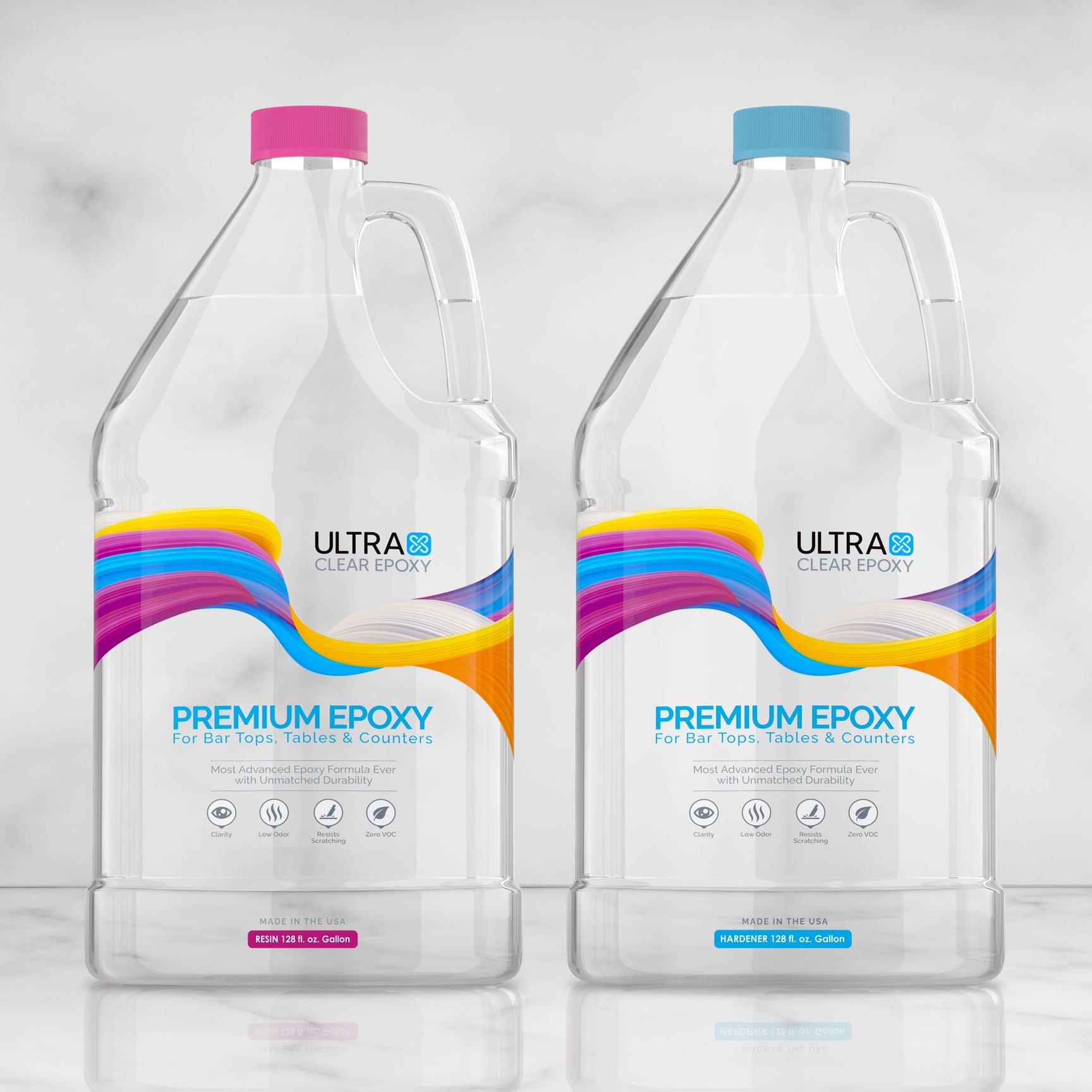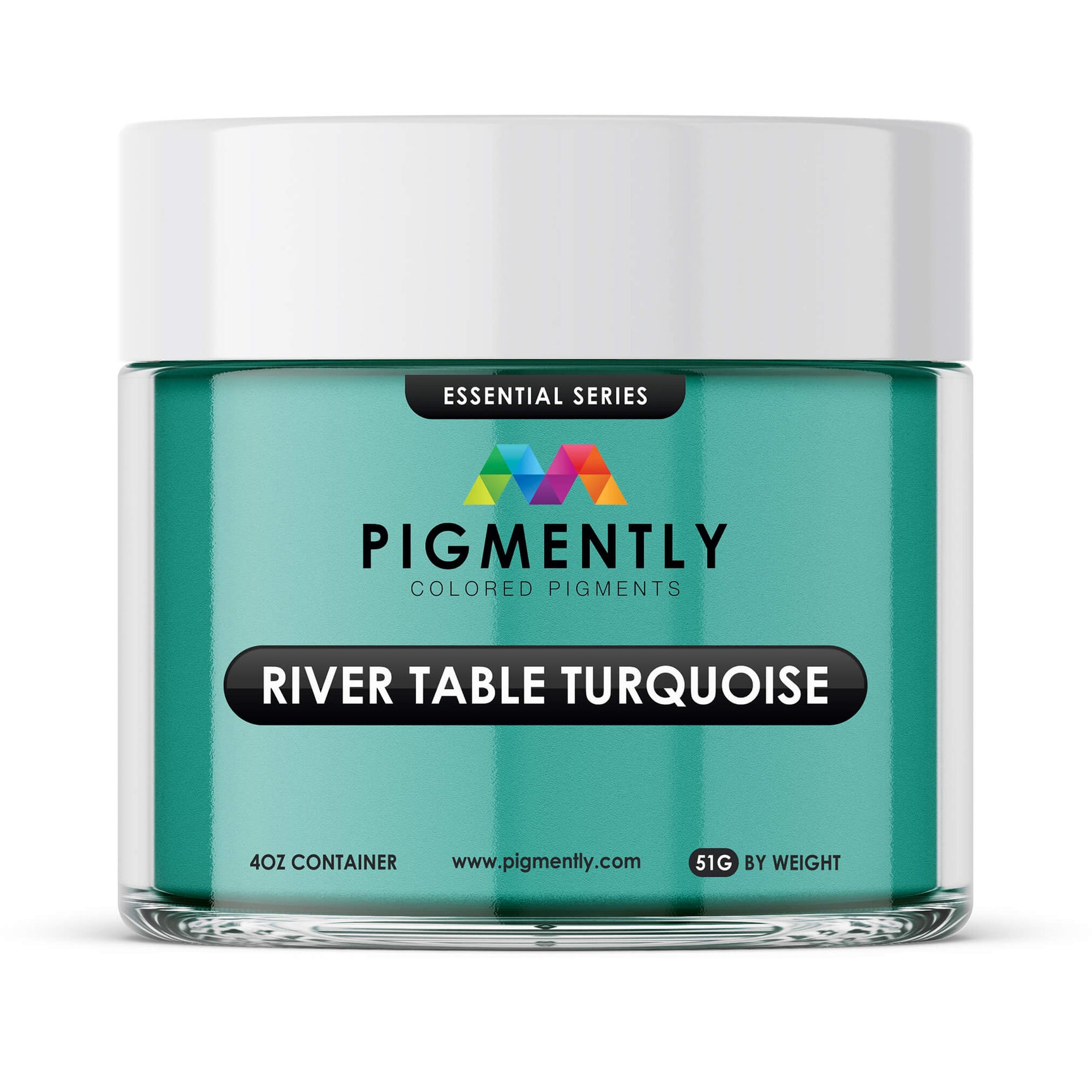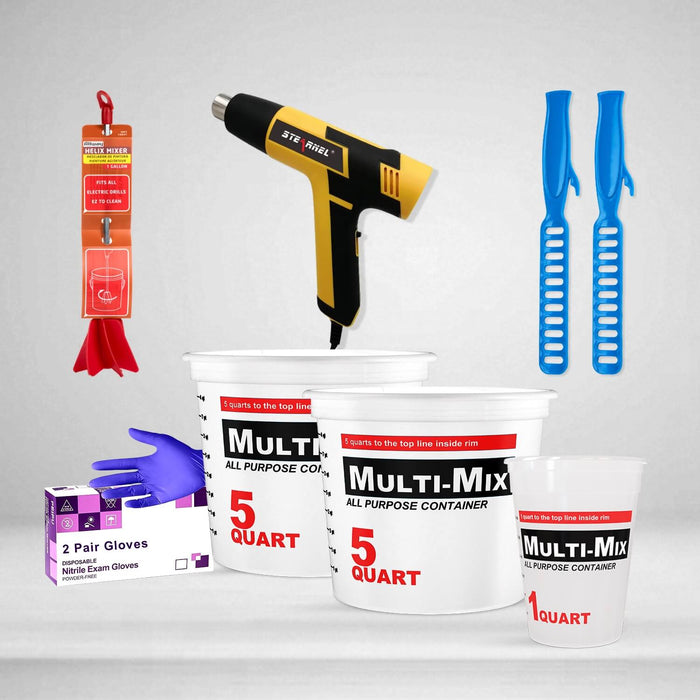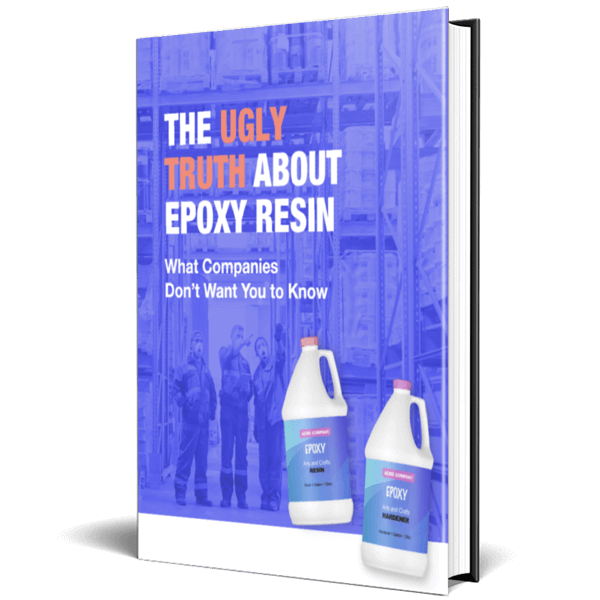Among epoxy projects, few are as iconic as the river table. These stunning works of art are not only functional and aesthetically pleasing but also achievable even by inexperienced epoxy users.
But to create one of your own, either through DIY efforts or with professional help, you first must plan out your project, and that includes choosing the right kind of epoxy for the job. While aspiring epoxy users might be familiar with the most common epoxy type, table top epoxy, there are also other types of epoxy which are often preferable for river table projects.
In this article, we'll explain what river tables for those who aren't familiar, then go over the types of epoxy often used in crafting them. In many cases only one type is needed for beautiful results, but users can also go the extra mile to create something truly enduring.
Beyond that, we'll provide some extra resources that may be of use in river table project planning, or just for further understanding of epoxy in general.
What is a river table?
A river table is a type of table top where a "river" or "stream" of epoxy resin is poured between two pieces of wood, typically slabs with natural edges. The design creates the appearance of a flowing river or waterway running through the table, often with the natural grain of the wood as the banks of the river.
River tables include several notable features, including:
- An epoxy resin river: Perhaps the most striking feature of a river table is the epoxy river vein, which fills the gap between two wooden slabs to create a "river" effect. The resin can be colored with colorants such as mica pigments or left clear, depending on the desired aesthetic. Tables can have multiple river veins.
- Natural wood slabs: The most common material choice for a river table is wood, typically consisting of two large slabs. Live-edge wood is often preferable, as it showcases the natural beauty and grain patterns of the wood. The epoxy fills the gaps between the slabs, forming a strong bond with the wooden surfaces.
- Customization: The river effect can be customized with various colors, such as blue or green for a water-like appearance, or even metallics like bronze for something more dramatic. The "river" itself can be a straight line or a more organic shape that mimics a winding stream.
- A unique result every time: Each river table is one-of-a-kind, as the natural features of the wood and the shape of the epoxy river make every piece distinct.
River tables can be different types of tables, such as:
- Dining tables: River tables are often used as statement pieces in dining rooms, offering both functionality and a striking aesthetic.
- Coffee tables, end tables: Smaller river tables make beautiful and functional coffee tables or end tables.
- Desks and other furniture: River tables can also be crafted as other types of furniture, such as desks, side tables, and console tables.
River tables are a splendid choice if you're interested in a unique and visually striking furniture piece that combines the natural beauty of wood with the versatility of epoxy resin.
Which epoxies are best for making a river table?
There are two types of epoxy commonly used and recommended for creating river tables, table top epoxy and deep pour epoxy. Depending on the type of river table and your project goals, either of these epoxies may end up being the better choice.
We'll compare their strengths and weaknesses for this purpose below, but first let's talk about epoxy quality.
Why quality matters when choosing your epoxy
These days, there are numerous epoxy options to choose from. Unfortunately, many of these epoxies have been imported from underregulated regions where quality control is poor. These imported budget brands are often sold at an extra low price, made possible because the quality of the product is so low and far more likely to fail.That's why choosing a high-quality epoxy over a low-cost, subpar epoxy is so important to achieving durable, long-lasting results.

UltraClear Epoxy: Crystal-clear epoxy that lasts for many years
At UltraClear, we offer only high-quality epoxy resins that are specifically formulated to provide optimal clarity, strength, and resistance to scratches, yellowing, and other forms of degradation.
Not only are our resins carefully tested and manufactured to meet safety standards—ensuring that they will cure properly, adhere well to surfaces, and remain clear and resistant to damage over time—but they're also 100% made in the USA.
Using UltraClear Epoxy ensures that your project is safe and free from harmful chemical reactions. Manufacturers of cheap epoxies, especially those produced overseas, often find ways to bypass the stringent regulatory standards for safety, at the user's expense. But UltraClear Epoxy products adhere to these standards while also including top-notch customer support and clear instructions for use. Investing in a premium epoxy like UltraClear not only guarantees better performance and aesthetic results but also provides peace of mind, knowing that your project is safe, durable, and built to last.
Give yourself the best with UltraClear, which you'll find on the following pages:
Table top epoxy vs deep pour epoxy
When crafting a river table, both table top epoxy and deep pour epoxy can be used, but they serve different purposes and offer distinct advantages and limitations.
Here's a comparison of the two types of epoxy in the context of creating a river table:
1. Depth of Pour
-
Table top epoxy:
- Designed for thin layers, typically around 1/8 inch to 1/4 inch thick per pour.
- Not ideal for deep pours; it’s better suited for a smooth, glossy finish over smaller gaps or thin layers.
- Use case for river tables: Table top epoxy can be used for filling small gaps or adding a glossy finish over a previously poured deep layer, but it’s not recommended for creating the river effect in thicker pours.
-
Deep pour epoxy:
- Specifically designed for thicker layers, typically up to 2 inches per pour.
- Perfect for creating the dramatic river effect, as it can fill wider gaps between slabs of wood without risking incomplete curing or excessive heat buildup.
- Use case for river tables: Ideal for the bulk of the "river" part of the table. Deep pour epoxy can handle the substantial thickness required for a large gap between the two wood slabs.
2. Curing time
-
Table top epoxy:
- Starts curing more quickly than deep pour epoxy, usually within 24-48 hours, depending on thickness and environmental conditions.
-
Deep pour epoxy:
- Cures more slowly (up to 72 hours or more for thicker layers) to prevent heat buildup and ensure complete curing in thick pours.
- Longer curing time allows for more time to manipulate the epoxy.
3. Heat resistance
-
Table top epoxy:
- While more durable than deep pour epoxy, table top epoxy is less suited for thicker layers and may experience heat buildup when poured in larger amounts, potentially leading to cracks or cloudiness.
-
Deep pour epoxy:
- Specifically formulated to handle the heat generated by thick pours. It has a slower curing time to prevent overheating and ensure a stable, durable finish.
4. Surface Finish
-
Table top epoxy:
- Designed to create a glossy, smooth surface with excellent clarity, making it ideal for topcoats or finishing layers.
- Table top epoxy is also more durable than deep pour epoxy.
- Works well for ensuring a polished, shiny finish once the river has been poured and cured.
-
Deep pour epoxy:
- Produces a similarly glossy finish but may require sanding and polishing after curing to achieve the desired smoothness, especially if the pour is thick.
- Since deep pour epoxy is usually poured in larger quantities, it might have some imperfections or require additional work to smooth out the surface.
5. Application and Ease of Use
-
Table top epoxy:
- Easier to handle for smaller pours and surface applications.
- Works well for thin layers, touch-ups, or finishing the surface after the river pour is completed.
- Deep pour epoxy:
6. Cost
-
Table top epoxy:
- Generally more affordable for smaller projects, but not ideal for larger, thicker pours required for a river table.
-
Deep pour epoxy:
- Tends to be cost more than table top epoxy because of a complex production process to allow for those larger, thicker pours, which makes the river vein much easier to create.
It's often best to use both.
Ultimately, while either epoxy is feasible as a solo option for crafting a river table, it's strongly recommended that users use both types.
Deep pour epoxy is ideal for crafting river veins of epoxy, due to its low viscosity and thick layer support. Table top epoxy, in turn, is much stronger as a finishing option, protecting surfaces from many types of physical damage.
Additional Resources
Here are some additional resources you may find useful:
- Frequently Asked Questions About Deep Pour Epoxy—Find the answers to common questions about using deep pour epoxy here.
- How to achieve a perfect river vein in your river table project—Learn how to consistently make picture-perfect river veins.
- How to apply epoxy to a table top—Learn how to apply a perfectly smooth coating of table top epoxy to your table top.
UltraClear Epoxy: Resin products of unmatched quality
As with any material, epoxy resin has both pros and cons. But no other sealant has so few weaknesses, and that's what puts epoxy above all other options when it comes to being a finish for high-traffic fixtures and furniture such as countertops, table tops, and bar tops. And among epoxy resin products, there are none that match the quality of UltraClear.
You can find our UltraClear Epoxy products on the following pages:
- UltraClear Bar & Table Top Epoxy: The classic choice for bar tops, countertops, and table tops. Rock-solid, waterproof, and crystal-clear.
- UltraClear Deep Pour Epoxy: Our deep pour casting resin. Ideal for thick layers, such as those needed for river tables.
- UltraClear Art & Craft Epoxy: Our arts and crafts resin, designed for smaller artistic endeavors which typically involve resin molds and require a bit more fluidity than bar top epoxy.
Epoxies that endure, with minimal upkeep
With high chemical and physical resistance, UltraClear resins can withstand and endure many forms of wear and tear without breaking a sweat or showcasing any cosmetic damage.
Plus, in addition to its ease of application, they also require little upkeep to maintain its pristine appearance. With a high-quality epoxy finish, you can expect a minimum lifespan of 7 years, with no need for reapplication. Beyond that, it's a breeze to renew that coating, requiring only a light sanding and a fresh layer of epoxy.
Expert support from our resin specialists
For more information about epoxy, or for assistance with your epoxy project, contact us at UltraClear Epoxy, where you can speak with one of our epoxy experts. During business hours, you can also text chat online with one of our resin specialists by clicking the Help button at the bottom of your screen.

















